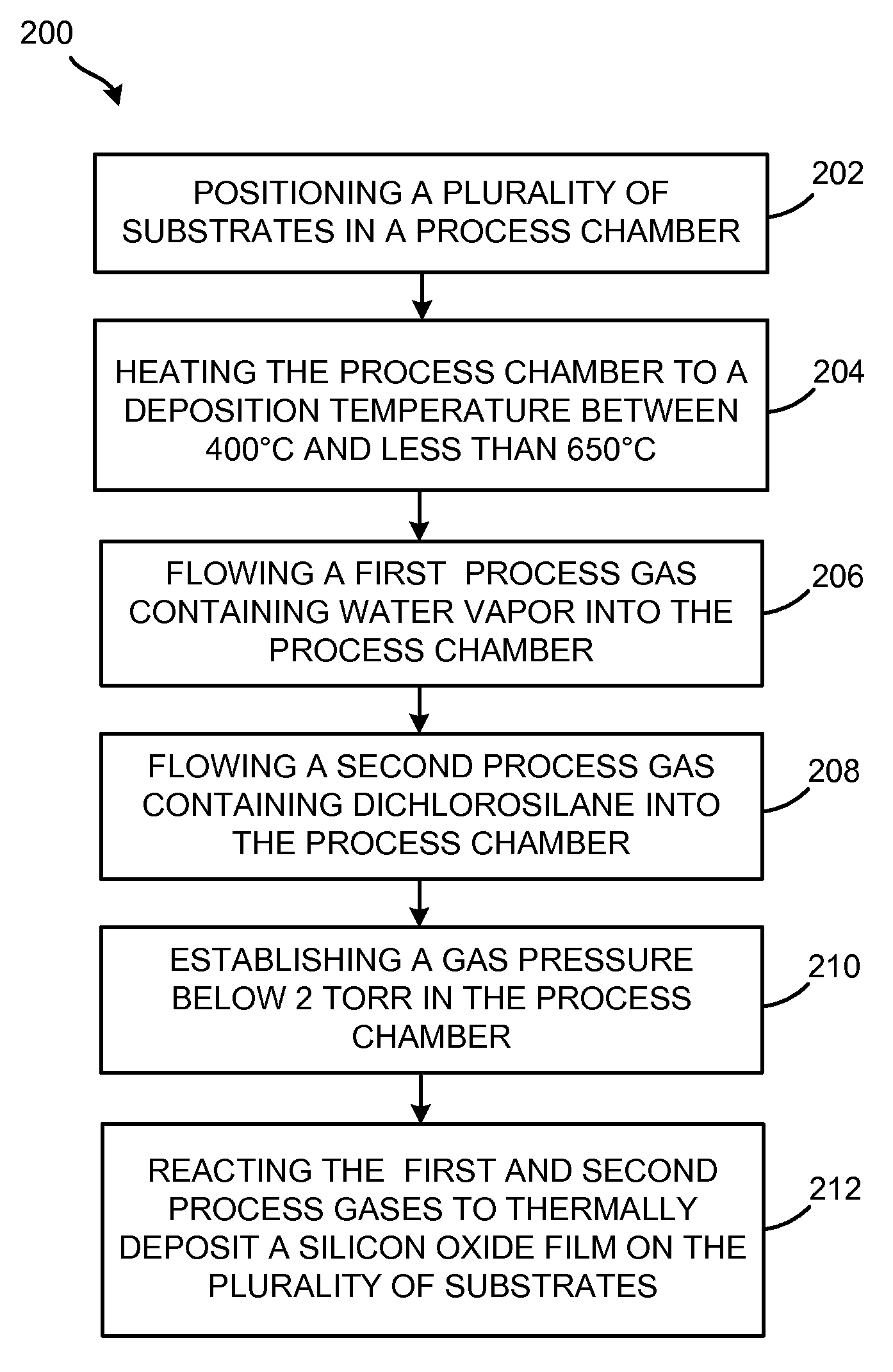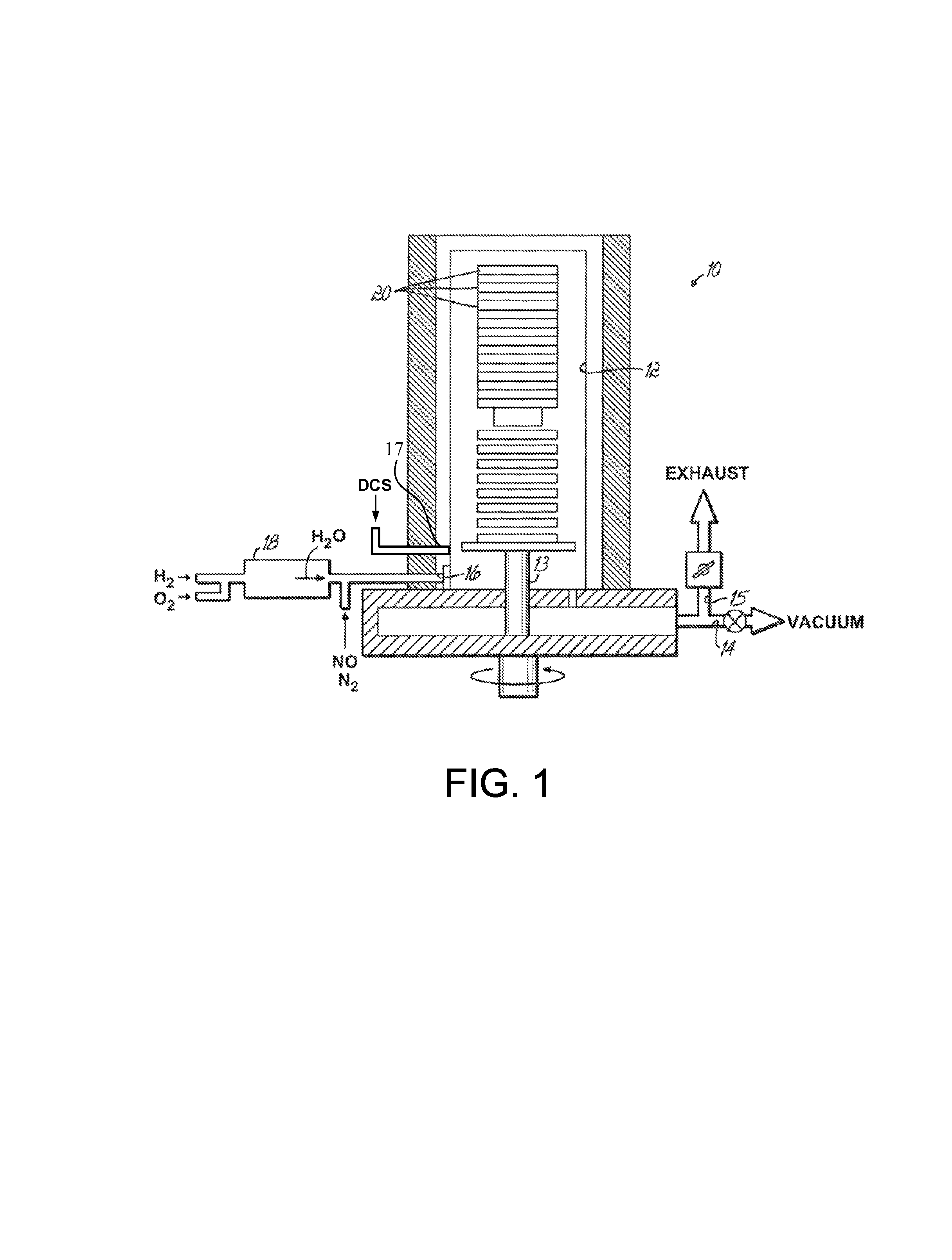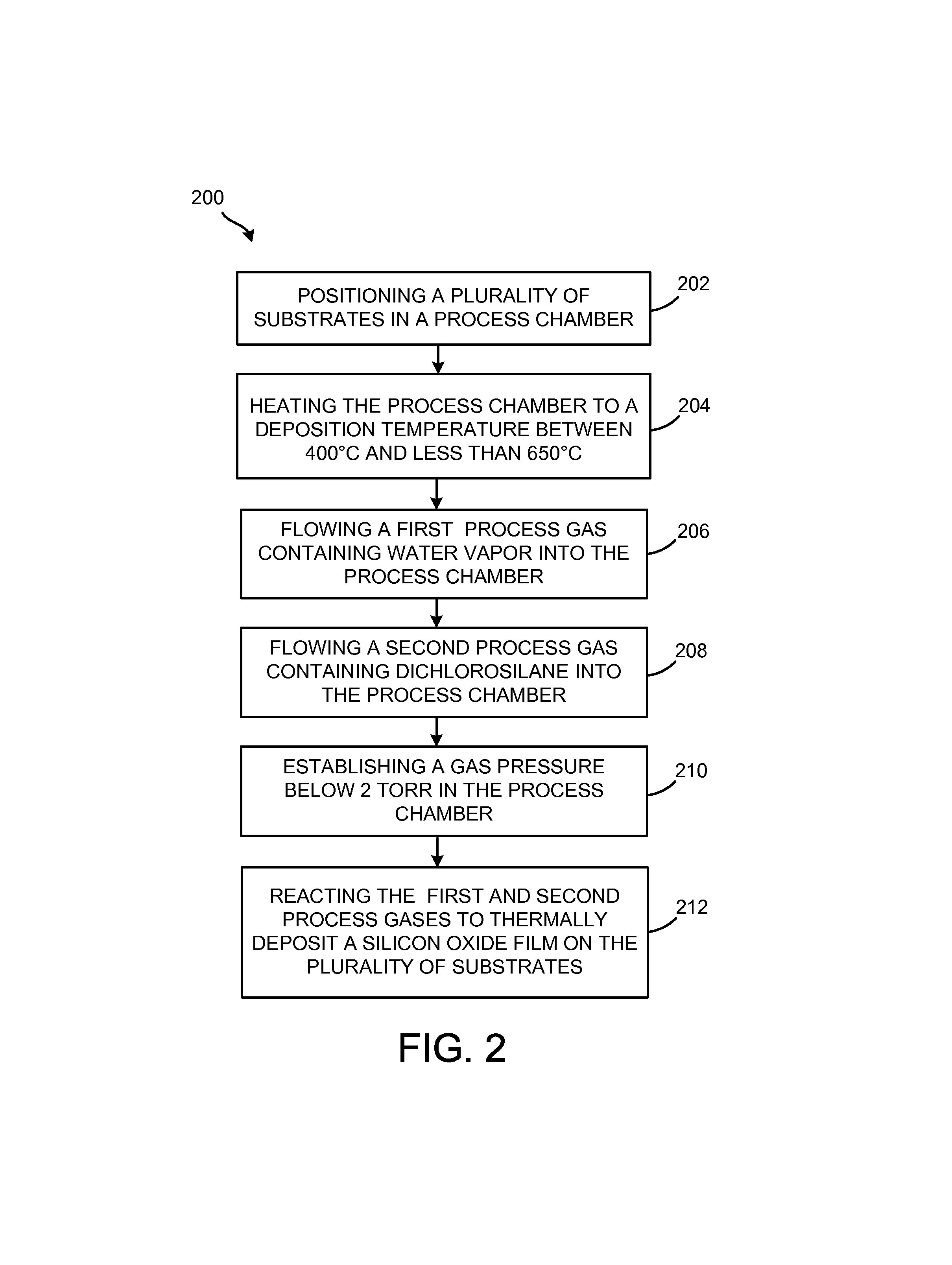Low-temperature dielectric film formation by chemical vapor deposition
a dielectric film and low-temperature technology, applied in the field of low-temperature dielectric film deposition, can solve the problems of poor and generally uncontrollable nitrogen (n) incorporation into silicon oxide films, limit their use,
- Summary
- Abstract
- Description
- Claims
- Application Information
AI Technical Summary
Benefits of technology
Problems solved by technology
Method used
Image
Examples
Embodiment Construction
[0015]Embodiments of the invention provide a low-temperature deposition process for forming dielectric films for semiconductor devices. In one embodiment, a method is provided for non-plasma CVD of silicon oxide films using dichlorosilane (DCS) and water vapor. In another embodiment, a method is provided for non-plasma CVD of silicon oxynitride films using DCS, water vapor, and nitric oxide (NO) gas. Embodiments of the invention achieve high deposition rates of silicon dioxide and silicon oxynitride films with good material and electrical properties while utilizing lower deposition temperature than industry standard high-temperature oxide (HTO) processes that rely on the reaction of dichlorosilane (DCS) and nitrous oxide (N2O) on a substrate.
[0016]The inventors have realized that replacing a N2O oxidizer with a water vapor oxidizer, and optionally NO gas for forming silicon oxynitride films, allows for lowering the deposition temperature by greater than 100° C., greater than 200° C....
PUM
 Login to View More
Login to View More Abstract
Description
Claims
Application Information
 Login to View More
Login to View More - R&D
- Intellectual Property
- Life Sciences
- Materials
- Tech Scout
- Unparalleled Data Quality
- Higher Quality Content
- 60% Fewer Hallucinations
Browse by: Latest US Patents, China's latest patents, Technical Efficacy Thesaurus, Application Domain, Technology Topic, Popular Technical Reports.
© 2025 PatSnap. All rights reserved.Legal|Privacy policy|Modern Slavery Act Transparency Statement|Sitemap|About US| Contact US: help@patsnap.com



